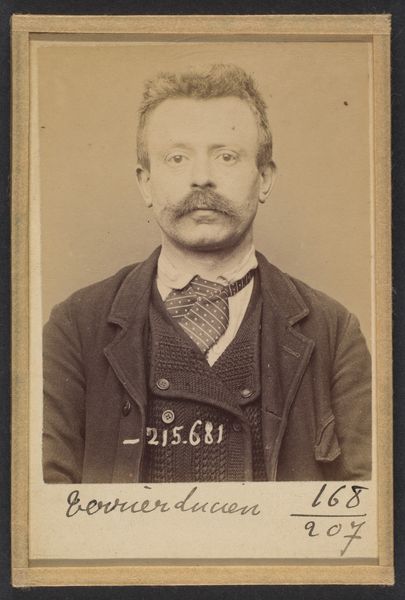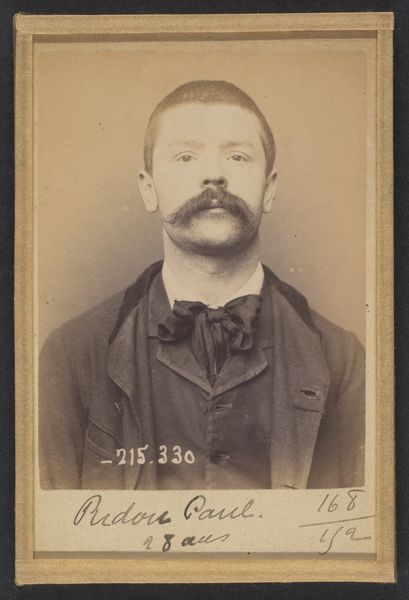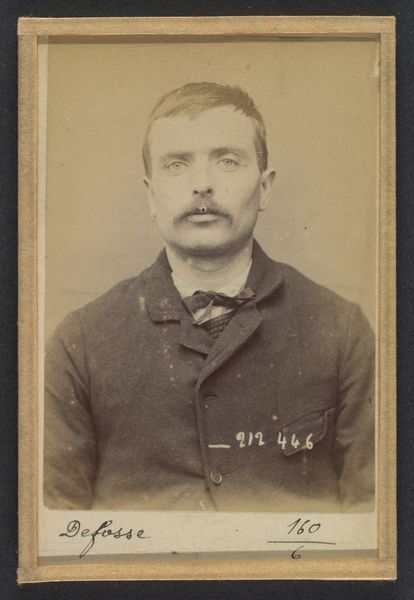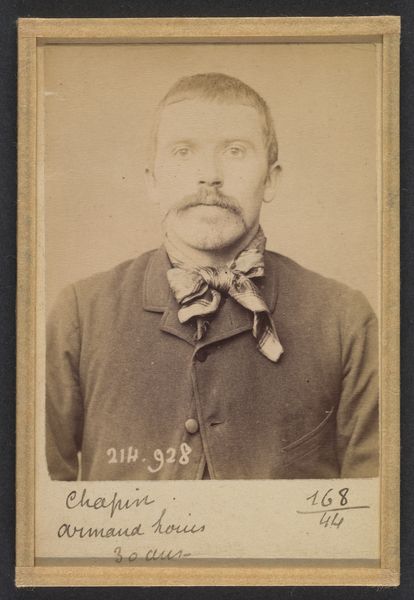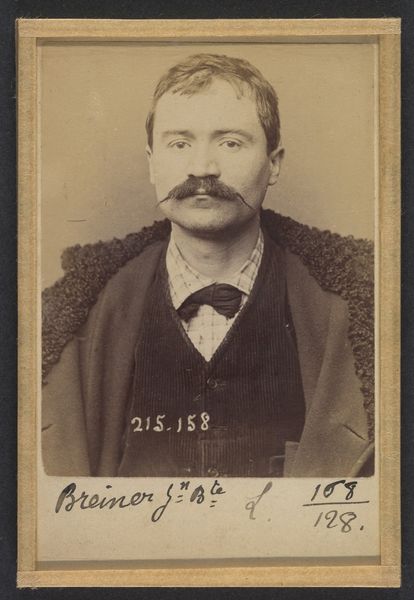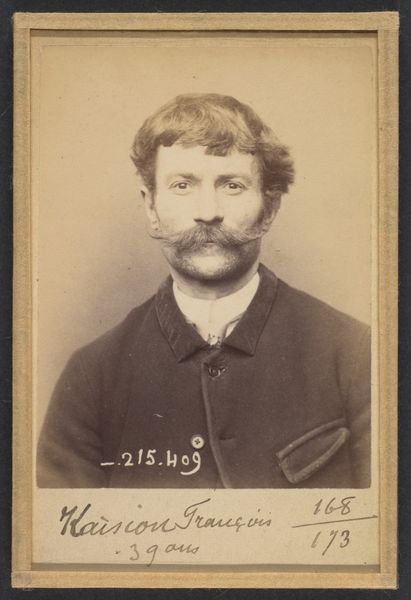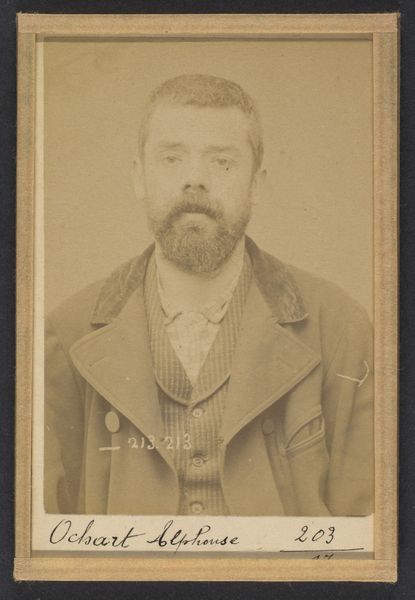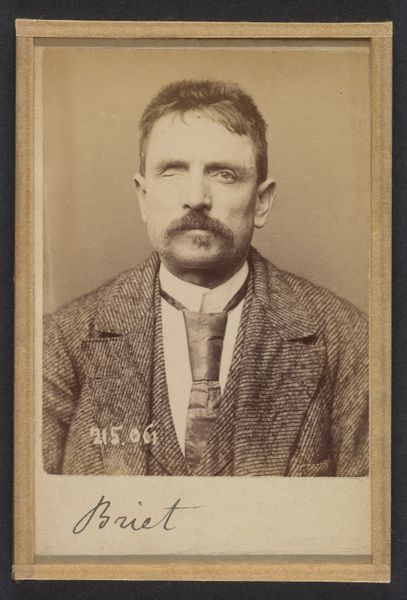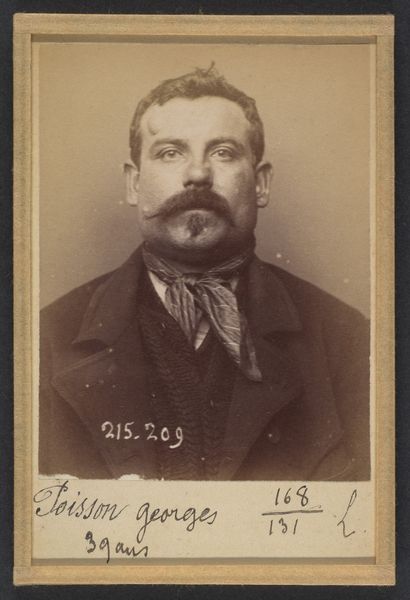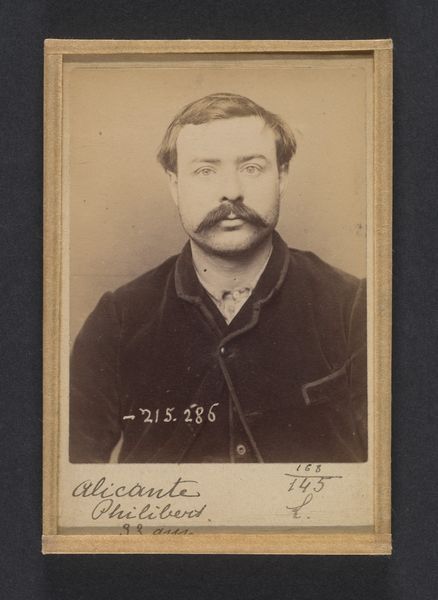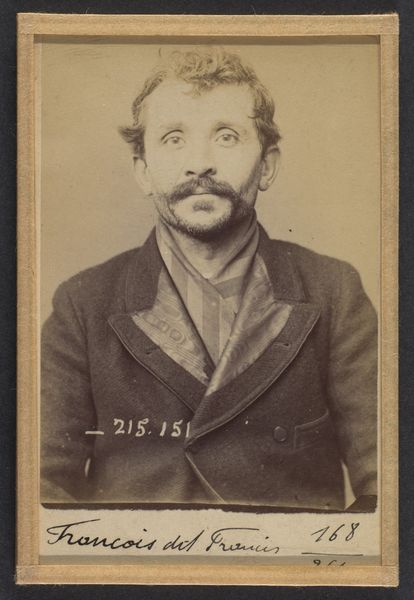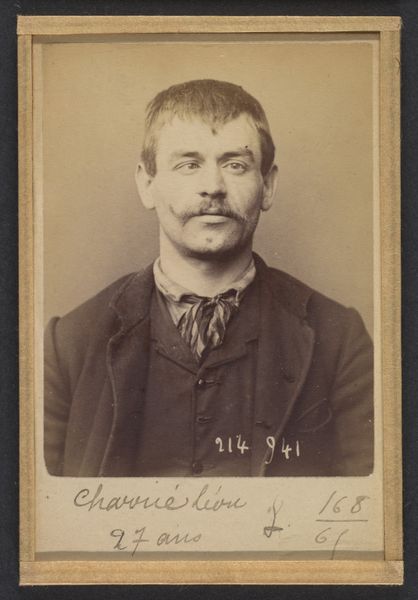
Lustenberger. Louis, Joseph. 38 ans, le 16/3/56 à Paris XXe. Ciseleur. Anarchiste. 17/7/94. 1894
0:00
0:00
photography, photomontage
#
portrait
#
african-art
#
portrait
#
photography
#
photomontage
#
realism
Dimensions: 10.5 x 7 x 0.5 cm (4 1/8 x 2 3/4 x 3/16 in.) each
Copyright: Public Domain
Curator: Something about this photograph... it just throws a veil of melancholy over everything. Don't you feel that? The sepia tones, the man's weary eyes... Editor: That’s precisely what I find compelling too. We’re looking at a photomontage created in 1894 by Alphonse Bertillon. The title is "Lustenberger. Louis, Joseph. 38 ans, le 16/3/56 à Paris XXe. Ciseleur. Anarchiste. 17/7/94." It’s currently held at the Metropolitan Museum of Art. Curator: An anarchist, huh? Adds another layer, doesn’t it? Makes you wonder what story those eyes could tell. You feel his presence, almost like a specter from the past. I imagine him a fiery soul crushed by…well, everything. Editor: Absolutely. This isn't just a portrait; it's a piece of documentation intertwined with power dynamics and social anxieties of the late 19th century. Bertillon was pioneering forensic science, creating systems of identification during a time when anxieties around immigration, class conflict, and political radicalism were boiling over in Paris. The subject's profession – "Ciseleur" or Chaser, that is, someone who engraves metal - situates him within a particular labor context. Curator: It’s like looking at a mugshot and a formal portrait collided. So detached and clinical. It makes me question the morality around methods of identifying and cataloging individuals in general... It feels incredibly dystopian when considering who decides those categories and why. Editor: Exactly. These "identity portraits" were instruments of social control, attempting to categorize and manage individuals deemed "deviant" or "dangerous." And there’s a deeply political aspect to this as well. Remember, 1894 was the year of significant anarchist activity and repression. So Lustenberger's label isn't merely descriptive; it’s an ideological condemnation that might have marked him for state violence. His photograph is a complex interplay of individual story and systematic oppression. Curator: It's a sobering reminder of the dark corners of history. Editor: Indeed. This portrait, through its details, compels us to question not only the individual fate of Lustenberger, but also the larger sociopolitical systems at play. Curator: A perfectly framed historical ghost story then! Editor: Precisely, if a ghost story could make us question our present realities.
Comments
No comments
Be the first to comment and join the conversation on the ultimate creative platform.
